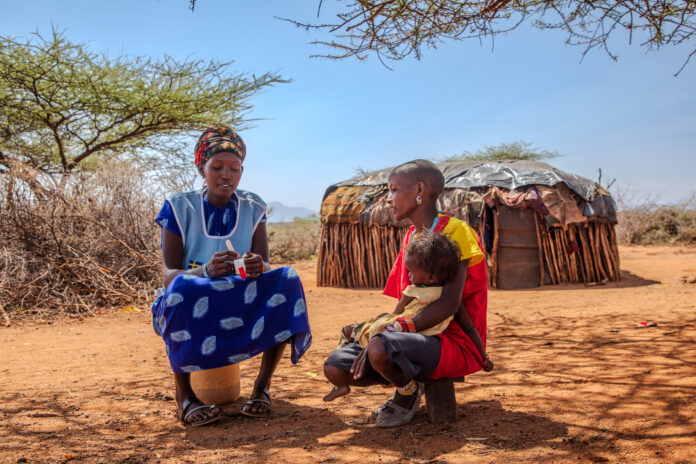As the U.S. Agency for International Development (USAID) formally shuts down on July 1st and transfers its operations to the U.S. Department of State, the global humanitarian sector is grappling with severe consequences. The transition, marked by uncertainty and deep funding cuts, has already triggered a catastrophic breakdown in supply chains that deliver life-saving nutrition treatment to malnourished children worldwide.
Nearly 90% of USAID’s foreign aid contracts have been terminated, slashing tens of billions of dollars in global assistance, including a staggering $1.4 billion reduction in emergency nutrition funding. These cuts have devastated the production and distribution of ready-to-use therapeutic foods (RUTF) — a vital medical treatment used to save children suffering from severe acute malnutrition.
Health experts are warning that the disruption is already causing a global nutrition crisis, with millions of children at immediate risk. “All our clinic staff are worried,” said Denish Ogen Rwot, South Sudan Communication and Advocacy Lead for Action Against Hunger, . “There is drought, flooding, spiking cases of cholera, and more and more refugees coming in from Sudan. All of this increases the rates of malnutrition. Now life-saving supplies are about to run out; there is despair. It’s tough here.”
RUTF products, including the widely known peanut paste-based “Plumpy’nut,” have revolutionized malnutrition treatment, increasing survival rates for severely malnourished children from 25% to over 90%. Yet without urgent replenishment, experts project that stock-outs will begin in 18 high-risk countries in the coming weeks, endangering the lives of over 2 million children.
The ripple effects are also being felt in rural America. Peanut farmers in Georgia and dairy producers across the country — key suppliers of ingredients for RUTF — have been hit hard by canceled procurement contracts. MANA Nutrition, a major RUTF producer based in Fitzgerald, Georgia, has had to scale back operations dramatically, threatening local jobs and economic stability. Navyn Salem, CEO of Edesia, a Rhode Island-based nonprofit RUTF manufacturer, confirmed that production has dropped to just 40% of capacity, with no new orders received since December 2024.
“Feeding children and mothers and families is a very important American value that has always been bipartisan,” said Salem. “We are the ones who are there in a family’s time of crisis. They will never forget that it was the American people who came to their aid.”
According to Action Against Hunger, the global funding gap for therapeutic nutrition in 2025 now exceeds $993 million. Without renewed U.S. support, the progress made over the past three decades in reducing child malnutrition-related deaths could be reversed overnight.
“Our world has seen immense progress in preventing child deaths from malnutrition,” said Dr. Heather Stobaugh, Associate Director of Research and Innovation at Action Against Hunger. “Unless we act fast and reverse the funding cuts, we’ll regress 30 years. Mothers will bring their sick children to health centers only to be turned away because treatment is no longer available. Children will start dying — that’s the reality.”
Experts emphasize that restoring strong U.S. leadership in global nutrition is not only a moral imperative but also a matter of national interest. Supporting nutrition supply chains sustains American manufacturing, stabilizes rural economies, and promotes global security.
The urgency of the situation has prompted calls for immediate action. Advocacy groups are urging policymakers to reinstate critical funding and support mechanisms to avoid a deepening crisis.
For journalists and media outlets, interviews with affected stakeholders — from U.S. manufacturers and farmers to global nutrition experts and aid workers on the front lines — are available upon request. B-roll footage and photographs documenting the situation on the ground are also accessible to support coverage of this unfolding crisis.








